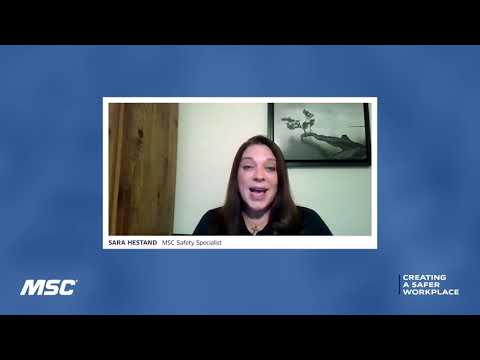What is the hazard communication standard and how do you implement it in your facility? Learn more about keeping your workers safe with the system for chemical classification, labeling and hazard communication.
The Globally Harmonized System of Classification and Labelling of Chemicals, or GHS, is an international system for classifying and labeling chemicals that is designed to provide consistent guidelines to categorize human health and environmental hazards in the workplace.
Created by the United Nations, the GHS standardizes the way these hazards are communicated on labels and safety data sheets (SDS). It covers all hazardous chemicals including pure substances and mixtures.
GHS was officially adopted in the U.S. on March 26, 2012, by the Occupational Safety and Health Administration (OSHA). OSHA’s adoption of the GHS is actually a revision of the Hazard Communication Standard designed to align with the GHS. It’s called HazCom 2012.
Earlier this year, OSHA initiated its first major update to HazCom 2012 since it became mandatory in 2015, indicating its intention to address issues that have arisen since the new system was first implemented, and to keep the hazard communication standard updated regularly.
OSHA has always intended to, just as the Department of Transportation updates the Hazardous Materials Regulations to ensure compliance with international requirements.
Read more: The Evolution of the Hazard Communication Standard
On Feb. 16, 2021, OSHA filed a proposed rule and request for comments (Agency/Docket Number OSHA-2019-0001) on the Federal Register, revealing its intention to update the hazard communication. OSHA has scheduled an informal public hearing for Sept. 21 on proposed updates to the hazard communication regulations.
For companies looking to comply with OSHA’s 29 CFR 1910.1200(e) regulation for Hazard Communication, a written HazCom plan that documents and outlines how your company responds to hazardous chemicals is required.
Tracking, maintaining and managing your chemical inventory is crucial to your HazCom plan and GHS compliance. In order to maintain a successful plan, you must keep your inventory organized and updated.
Update Chemical Containers with GHS Labels
Labeling is the cornerstone of GHS compliance.
With an emphasis on consistency and comprehension of chemical labels, it is important to know what goes into a GHS label for primary and secondary containers.
Here are the six key elements to a GHS label that you need to know.
Signal Word. The signal word indicates hazard level. “Danger” is used for the most severe instances, while “Warning” is less severe.
GHS Symbols (Hazard Pictograms). These pictograms are used to identify hazardous products and are commonly grouped by chemical/physical risk, health risk and environmental risk. View Brady’s GHS pictogram guide.
Manufacturer Information. This identifies the manufacturer’s company name, address and telephone number.
Precautionary Statements/First Aid. These are phrases that are tied to each hazard statement. They describe general preventive, response, storage or disposal precautions. These statements are found on the chemical’s safety data sheet. Similar to hazard statements, precautionary statements can be identified by a P-code (like P100).
Hazard Statements. These are phrases that describe the nature of hazardous products and the degree of hazard. Hazard statements are on the chemical’s SDS and identified by an H-code (like H100).
Product Name or Identifiers. This identifies the product or chemical name. Additional identifiers can be noted to the right of the manufacturer’s information.
Primary vs. Secondary Containers
Primary chemical containers are the bags, barrels, bottles, boxes, cans, cylinders and drums that you receive from the manufacturer. These containers should be labeled following the GHS mandates per the GHS label example above and include all six labeling elements.
When a label is on a container directly from a supplier, this label cannot be removed, altered or defaced. If it needs to be replaced, the new label must contain the same information as the original.
Secondary containers are usually smaller than primary containers and could include spray bottles, jugs or jars. These containers usually hold chemicals that are transferred from a primary container. Secondary containers must comply with GHS labeling requirements except when the following criteria are met:
The material is used within the work shift of the individual who makes the transfer.
The worker who made the transfer is in the work area the entire time during use.
The container stays within the work area and in the possession of the worker who filled the container.
OSHA has not changed the general requirements for secondary container labeling specifically. Employers have the option to create their own workplace labels by using all the information provided by the manufacturer or using a combination of the elements in the GHS label example above specific to the hazards of the chemicals.
Employers may continue to use rating systems such as the National Fire Protection Association (NFPA) diamonds or Hazardous Materials Identification System (HMIS) Requirements for workplace labels, as long as they are consistent with the HazCom 2012/GHS standard. To learn more about GHS labeling requirements, view the Frequently Asked Questions.
This article is adapted from a post that was previously featured on Brady’s website.

Related Articles

Why Fall Protection Remains One of the Most Persistent Challenges in Workplace Safety

Warehouse Safety Guidelines and Rules

Beyond Padlocks: The Future of Complete Lockout Solutions

Maximizing Operational Efficiency: The Critical Role of Hygiene in Industrial Facilities


